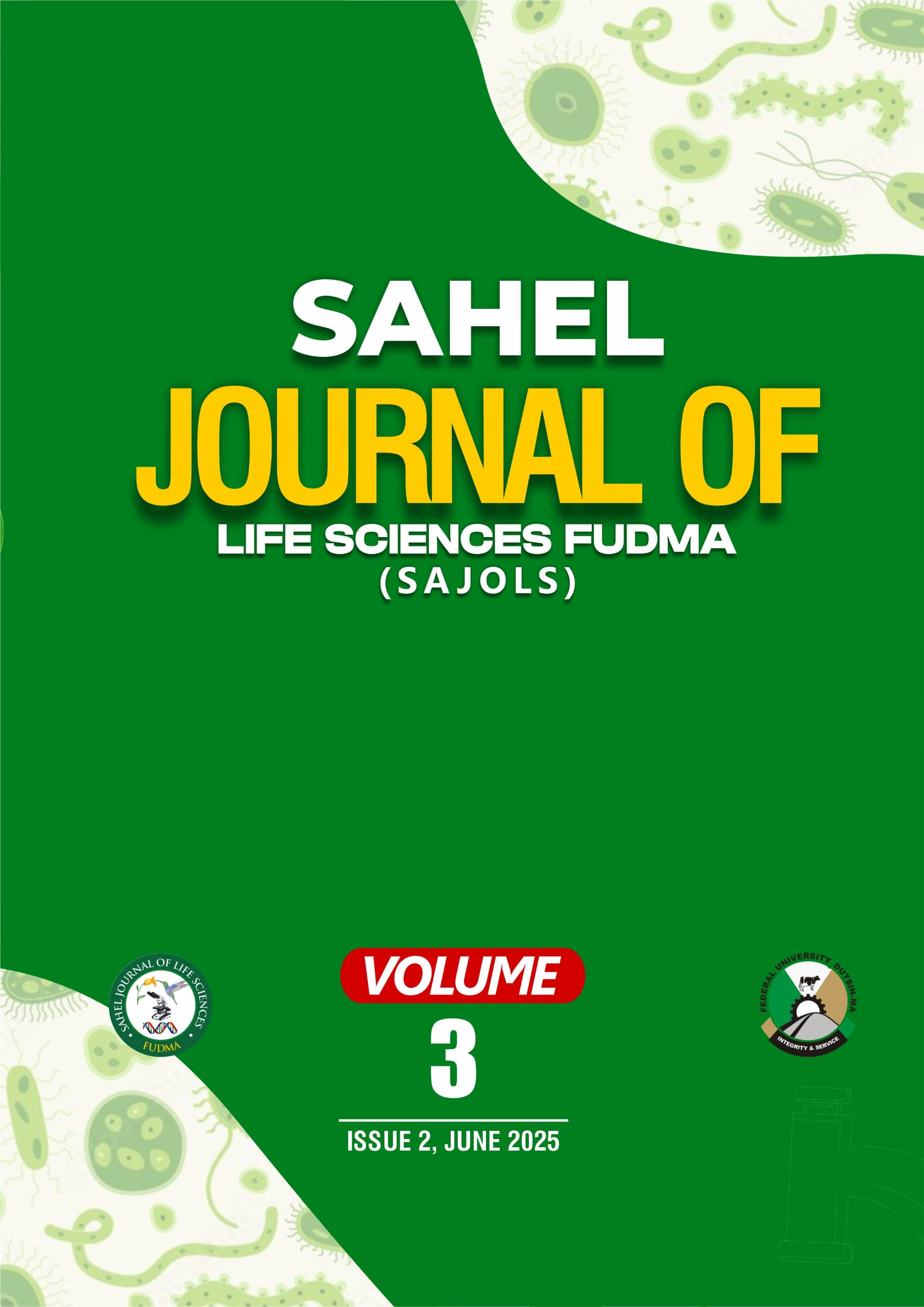The Impact of Consistent Dredging on Heavy Metals Concentration and Benthic Macroinvertebrate of Sediment at Okpare Creek, Delta State, Nigeria
DOI:
https://doi.org/10.33003/sajols-2025-0302-43Abstract
The influence of consistent dredging on heavy metal concentration and benthic macroinvertebrates was investigated at Okpare Creek, Ughelli, Delta State. Fourteen physicochemical parameters were analysed from four stations over one year, covering rainy and dry seasons. Parameters included pH, electrical conductivity (EC), total organic carbon (TOC), total organic matter (TOM), sand%, clay%, silt%, and concentrations of cadmium, chromium, iron, zinc, lead, copper, and nickel. Heavy metals were determined using atomic absorption spectrometry (AAS) after digestion. Sediment samples, collected with an Eckman grab, were sorted for macroinvertebrates, preserved in 5% formalin, and identified to the lowest taxonomic level under a dissecting microscope. The creek was slightly acidic, with pH and EC showing no significant variation (P>0.05) among stations. TOC and TOM differed significantly (P<0.05). Particle size distribution (sand, clay, silt) varied highly significantly (P<0.01). Among heavy metals, Fe, Zn, Cr, and Ni showed highly significant differences (P<0.01); Pb differed significantly (P<0.05), while Cd and Cu showed no significant differences (P>0.05). A total of 42 individual macroinvertebrates were recorded, belonging to two taxa: Diptera (87.5% of total density) and Odonata (12.5%). Margalef’s index indicated Station 2 as the richest, followed by Stations 4, 3, and 1. The low abundance and diversity of benthic macroinvertebrates were attributed to disturbances from ongoing dredging, which likely altered sediment composition and heavy metal distribution, adversely affecting habitat quality and organism survival.


